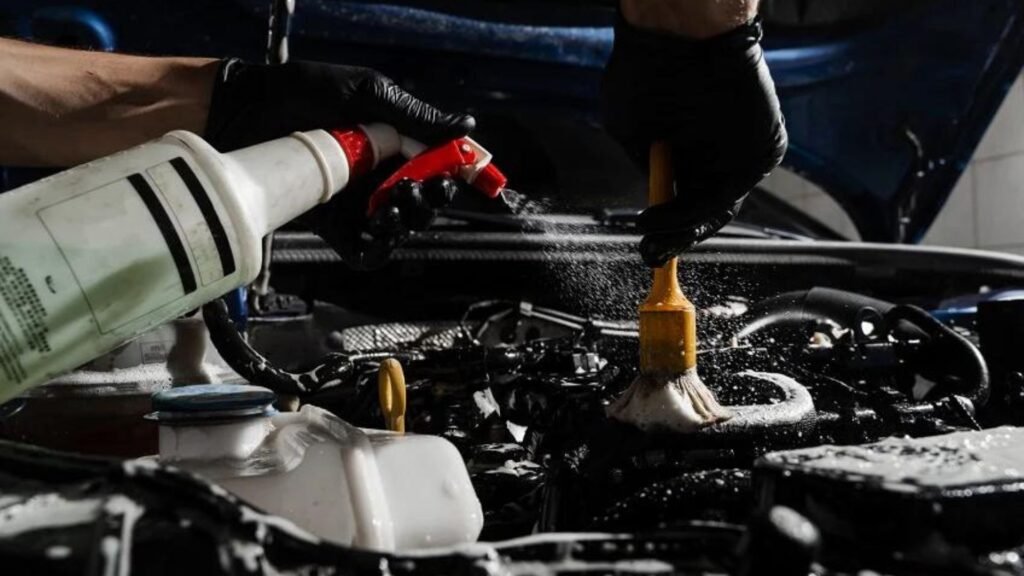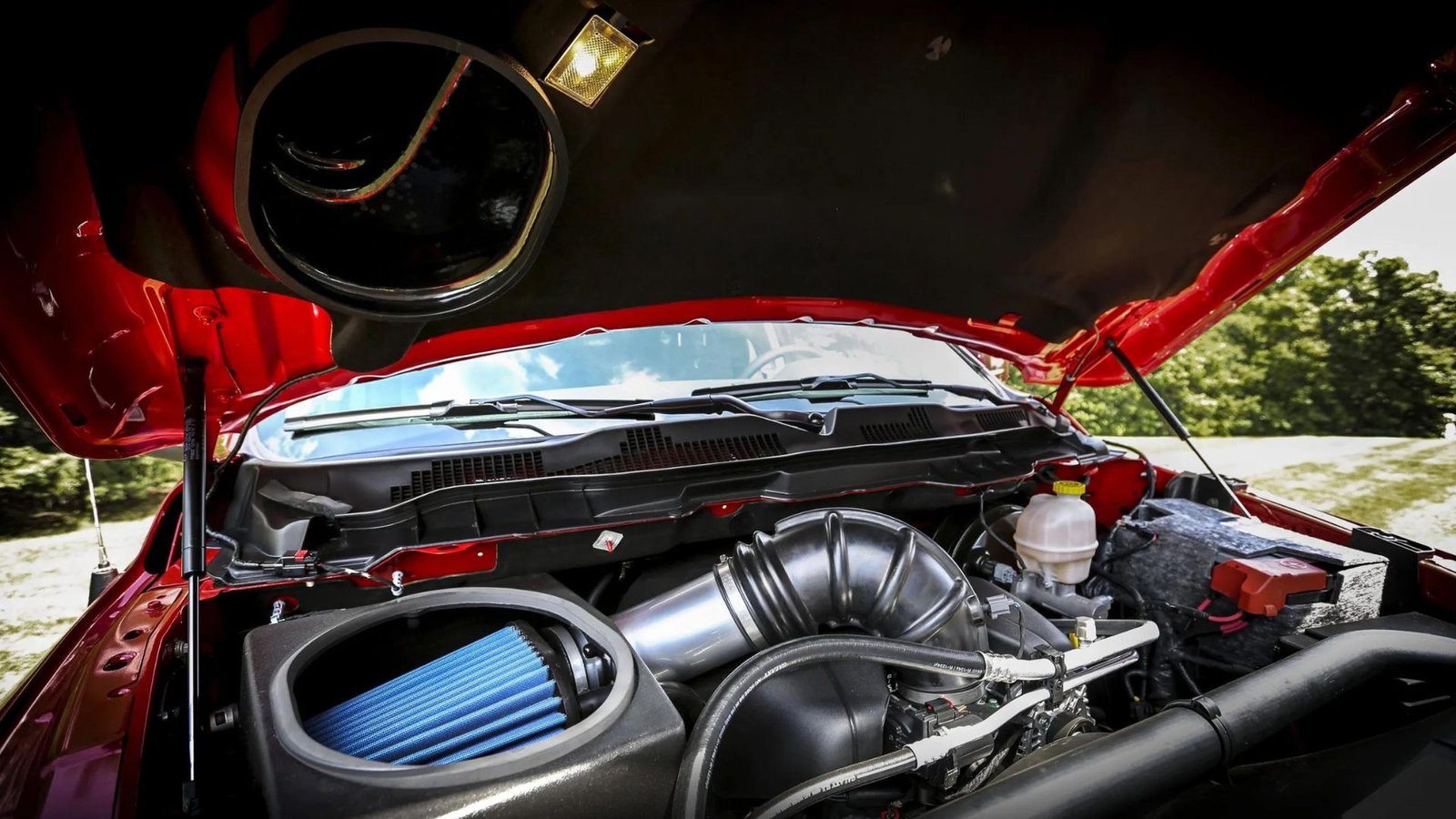Maintaining a clean engine is crucial for ensuring its longevity and optimal performance. Dirt, grime, and debris can lead to overheating, reduced efficiency, and potential damage over time. Here’s a guide to the top engine cleaning techniques that can help you keep your engine running smoothly and extend its lifespan.

1. Regularly Inspect and Clean Engine Components
1.1 Importance of Regular Cleaning
Overview: Regular inspections and cleaning prevent dirt and debris from accumulating on critical engine parts.
How to Clean:
- Inspect Periodically: Check for visible dirt, dust, and grime buildup on components.
- Use a Brush: Gently brush off loose dirt from accessible parts like the air filter and engine cover.
Benefits:
- Prevents Buildup: Keeps dirt and grime from affecting engine performance.
- Easy Maintenance: Simple routine tasks can prevent larger issues.
Drawbacks:
- Limited Access: Some engine components may be difficult to reach.
2. Use Engine Degreasers
2.1 What are Engine Degreasers?
Overview: Engine degreasers are specially formulated cleaners designed to remove grease and grime from engine surfaces.
How to Use:
- Apply Degreaser: Spray the degreaser on cool engine surfaces, focusing on oily and greasy areas.
- Scrub and Rinse: Use a brush or cloth to scrub, then rinse with water or a damp cloth.
Benefits:
- Effective Cleaning: Removes tough grease and grime.
- Improves Visibility: Clean surfaces make it easier to spot potential issues.
Drawbacks:
- Chemicals: Ensure the degreaser is safe for your engine and avoid overuse.
3. Use Compressed Air for Dust Removal
3.1 Why Use Compressed Air?
Overview: Compressed air is useful for blowing dust and debris out of hard-to-reach areas.
How to Use:
- Blow Dry: Use compressed air to blow dust and debris from engine components and crevices.
- Safety First: Wear protective eyewear and ensure the engine is off and cool.
Benefits:
- Efficient Dust Removal: Quickly clears dust from tight spaces.
- Prevents Buildup: Helps maintain clean engine components.
Drawbacks:
- Messy: Dust and debris can scatter, requiring cleanup afterward.
4. Clean the Engine Bay
4.1 Why Clean the Engine Bay?
Overview: Cleaning the engine bay not only improves appearance but also helps in identifying leaks and potential issues.
How to Clean:
- Cover Sensitive Parts: Protect electrical components with plastic bags.
- Spray and Wipe: Use a mild cleaner and a damp cloth to wipe down the engine bay surfaces.
Benefits:
- Improved Visibility: A clean engine bay makes it easier to inspect and maintain the engine.
- Prevents Corrosion: Removes contaminants that can lead to rust and corrosion.
Drawbacks:
- Precaution Required: Avoid getting water or cleaner on sensitive electrical parts.
5. Detail the Air Filter
5.1 Importance of a Clean Air Filter
Overview: The air filter prevents dirt and debris from entering the engine. Keeping it clean is vital for engine performance.
How to Clean:
- Remove the Filter: Take out the air filter according to your vehicle’s manual.
- Clean or Replace: Use compressed air to blow off dust or replace the filter if it’s too dirty.
Benefits:
- Better Airflow: Ensures optimal air intake, improving engine efficiency.
- Improved Performance: A clean air filter enhances overall engine performance.
Drawbacks:
- Replacement Cost: Some filters are inexpensive to replace if cleaning isn’t sufficient.
6. Clean Spark Plugs
6.1 Role of Spark Plugs
Overview: Spark plugs ignite the air-fuel mixture in the engine. Keeping them clean ensures proper engine performance.
How to Clean:
- Remove Spark Plugs: Use a spark plug socket to carefully remove each plug.
- Inspect and Clean: Use a wire brush or specialized cleaner to remove carbon deposits. Replace plugs if worn.
Benefits:
- Optimal Ignition: Ensures efficient combustion and engine performance.
- Improved Fuel Efficiency: Clean spark plugs can lead to better fuel economy.
Drawbacks:
- Skill Required: Removing and cleaning spark plugs requires some mechanical knowledge.
7. Avoid Using High-Pressure Water
7.1 Risks of High-Pressure Water
Overview: High-pressure water can force moisture into sensitive areas and cause electrical issues or damage.
Why to Avoid:
- Electrical Components: High pressure can disrupt electrical connections and sensors.
- Risk of Corrosion: Moisture may lead to rust and corrosion on metal parts.
Benefits:
- Prevents Damage: Avoids potential issues caused by moisture entering sensitive areas.
- Safer Cleaning: Reduces the risk of damage compared to using high-pressure water.
Drawbacks:
- Cleaning Limitations: May require alternative methods for thorough cleaning.
8. Use Protective Coatings
8.1 Benefits of Protective Coatings
Overview: Protective coatings can help keep engine components clean and protect against corrosion.
How to Apply:
- Select Coating: Choose a suitable engine protectant or coating.
- Apply as Directed: Follow the product instructions for application.
Benefits:
- Corrosion Prevention: Helps protect engine parts from rust and corrosion.
- Easier Cleaning: Coated surfaces are easier to keep clean.
Drawbacks:
- Application Time: May require additional time and effort for application.
Conclusion
Proper engine cleaning techniques are essential for maintaining engine longevity and performance. Regular inspections, effective use of degreasers, and careful cleaning practices help prevent dirt and grime from causing problems. By using methods such as compressed air, cleaning the engine bay, and maintaining components like the air filter and spark plugs, you can ensure your engine stays in top condition. Avoid high-pressure water and use protective coatings to safeguard against corrosion and damage. Consistent engine care will contribute to a smoother, more efficient, and longer-lasting engine.




